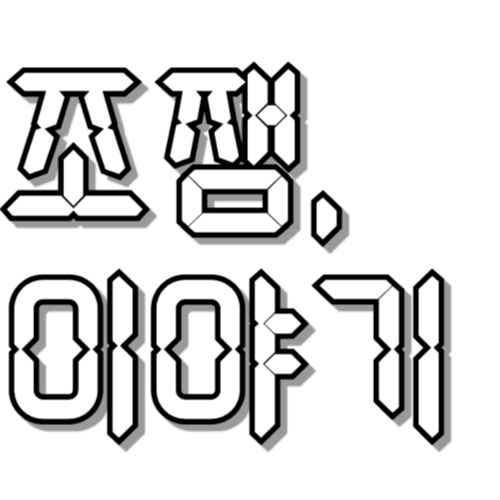GAN실습 - 환경구축 & BeautyGAN(1)
2021. 12. 16. 15:08ㆍ그냥, 코딩
반응형
이 자료는 한국인공지능협회에서 진행한 2021년 사업주 직업능력 개발훈련으로 BASIC AI(32시간)-박성주 강사의 온라인 교육내용을 참고한 것입니다.
BeautyGAN - 쌩얼에 화장해주기 or 화장한 얼굴로 쌩얼만들기
학습을 시킨 코드는 저작권때문에 공개되지 않았지만, 학습 모델은 공개되어 있음.
# 개발환경설정
- anaconda ID 생성: p36t19_beauty
- python버전 : 3.6.x
- tensorflow 버전: 1.9
- 개발툴: jupyter notebook
- 기타 라이브러리 설치하기
- matplotlib
- dlib
- 작업경로: C:\ai_exam\beautyGAN
- 훈련모델 다운로드(Pretrained Model)
- 소스다운로드 :https://github.com/kairess/BeautyGAN
GitHub - kairess/BeautyGAN: transfer the makeup style of a reference face image to a non-makeup face
transfer the makeup style of a reference face image to a non-makeup face - GitHub - kairess/BeautyGAN: transfer the makeup style of a reference face image to a non-makeup face
github.com
# 자주 사용되는 용어
- dlib : 사람의 얼굴을 인식하기 위한 랜드마크(landmark)를 찾아내는 라이브러리. 5p, 68p 2개로 구분하여 사람의 얼굴을 인식한다.
- 68point 좌표찾는 소스
- https://github.com/davisking/dlib-models
- Pretrained Model : 다운로드 소스를 공개한 개발자가 인공지능을 학습시켜 놓은 최종 학습된 파일
- checkpoint : 인공지능이 학습에 가장 좋은 점수가 나왔던 상태를 임시로 저장
- 전처리 : 인공지능이 학습하기 용이하도록 동일한 조건으로 만들어주는 것
# BeautyGAN 인공지능 실습
- 개발환경 구축(Anaconda)
- [시작] - anaconda3(64bit) - anaconda prompt(anaconda3)
- anaconda 사용자 ID 생성하기 : conda create -n p36t19_beauty python=3.6
- (계정삭제하는 방법)
- 계정리스트 확인: conda env list
- 계정 삭제: conda env remove -n (이름)
- (base) C:\WINDOWS\system32>conda env remove -n p36
- 로그인하기 : conda activate p36t19_beauty

- 라이브러리와 개발툴 설치하기
- tensorflow(V1.9) : (p36t19_beauty) C:\WINDOWS\system32>pip install tensorflow==1.9
- 버전 확인
-
import tensorflow as tf tf.__version__ '1.9.0'
- jupyter : (p36t19_beauty) C:\WINDOWS\system32>pip install jupyter
- matplotlib : (p36t19_beauty) C:\WINDOWS\system32>pip install matplotlib
- dlib 설치 순서
- cmake 설치 : (p36t19_beauty) C:\WINDOWS\system32>pip install cmake
- dlib 설치 : (p36t19_beauty) C:\WINDOWS\system32>conda install -c conda-forge dlib
- Proceed ([y]/n)? y

- tensorflow(V1.9) : (p36t19_beauty) C:\WINDOWS\system32>pip install tensorflow==1.9
- git 설치여부 확인
- git이 없다면? 'git'은(는) 내부 또는 외부 명령, 실행할 수 있는 프로그램, 또는 배치 파일이 아닙니다.
- windows 다운로드 : http://git-scm.com/download/win
- Git-2.32.0.2-64-bit.exe 실행 및 설치
- 설치 후에도 위의 메세지가 계속 뜬다면 anaconda prompt 종료 후 다시 시작
- git이 있다면? See 'git help git' for an overview of the system.
- git이 없다면? 'git'은(는) 내부 또는 외부 명령, 실행할 수 있는 프로그램, 또는 배치 파일이 아닙니다.
- 개발작업경로로 이동
- (p36t19_beauty) C:\WINDOWS\system32>cd C:\ai_exam
- (p36t19_beauty) C:\ai_exam>
- git으로 소스코드 다운로드
- git을 이용하면 해당 디렉토리에 github의 소스를 바로 받을 수 있다.
- (p36t19_beauty) C:\ai_exam>git clone https://github.com/kairess/BeautyGAN
- github의 소스 다운로드 확인

해당경로로 소스코드 그대로 복제했음
- Pretrained Model 다운로드
- https://drive.google.com/drive/folders/1pgVqnF2-rnOxcUQ3SO4JwHUFTdiSe5t9
- 위에 드라이브에 있는 4개의 파일들을 모두 다운로드
- 다운받은 checkpoint 파일들 지정된 경로로 이동 → C:\ai_exam\beautyGAN\models\
- 개발작업경로 이동
- (p36t19_beauty) C:\ai_exam>cd C:\ai_exam\BeautyGAN
- (p36t19_beauty) C:\ai_exam\BeautyGAN>
- jupyter notebook 실행
- (p36t19_beauty) C:\ai_exam\BeautyGAN>jupyter notebook
# tensorflow의 버전이 낮아서, 상위버전으로 바꾸라는 메시지가 뜰 수 있음
import dlib
import matplotlib.pyplot as plt
import matplotlib.patches as patches
import tensorflow as tf
import numpy as np
###########################################################################################
#Load Models
detector = dlib.get_frontal_face_detector() #얼굴의 정면을 찾는 작업
sp = dlib.shape_predictor('models/shape_predictor_5_face_landmarks.dat') #얼굴을 5개의 포인트로 인식해서 사용하겠다는 것
#5p:5포인트 지정, 68p:얼굴에 68포인트 지정
###########################################################################################
#Load Images
img = dlib.load_rgb_image('imgs/test4.jpg')
plt.figure(figsize=(16, 10))
plt.imshow(img)
###########################################################################################
#Find Faces
img_result = img.copy() #이미지원본에 카피해서 좌표를 지정
dets = detector(img, 1) # 얼굴에 관한 좌표를 찾아줌
print("face info = ", dets)
print("face info = ", len(dets))
if len(dets) == 0:
print('cannot find faces!')
fig, ax = plt.subplots(1, figsize=(16, 10))
for det in dets:
x, y, w, h = det.left(), det.top(), det.width(), det.height()
rect = patches.Rectangle((x, y), w, h, linewidth=2, edgecolor='r', facecolor='none')
ax.add_patch(rect)
ax.imshow(img_result)
###########################################################################################
#Find Landmarks 5points
fig, ax = plt.subplots(1, figsize=(16, 10))
objs = dlib.full_object_detections() #사람얼굴의 포인트마다 점을 찍어주는 것(눈과 눈사이, 코)
for detection in dets:
s = sp(img, detection)
objs.append(s)
for point in s.parts():
circle = patches.Circle((point.x, point.y), radius=3, edgecolor='r', facecolor='r')
ax.add_patch(circle)
ax.imshow(img_result)
###########################################################################################
#Align Faces # 얼굴의 회전하는 작업(수평을 맞춰줌)
faces = dlib.get_face_chips(img, objs, size=256, padding=0.3)
fig, axes = plt.subplots(1, len(faces)+1, figsize=(20, 16))
axes[0].imshow(img)
for i, face in enumerate(faces):
axes[i+1].imshow(face)
###########################################################################################
#Functionalize - 여러명의 사람이 들어간 이미지에서 사람의 얼굴만 가져오기
def align_faces(img):
dets = detector(img, 1)
objs = dlib.full_object_detections()
for detection in dets:
s = sp(img, detection)
objs.append(s)
faces = dlib.get_face_chips(img, objs, size=256, padding=0.35)
return faces
# test
test_img = dlib.load_rgb_image('imgs/test5.jpg')
test_faces = align_faces(test_img)
fig, axes = plt.subplots(1, len(test_faces)+1, figsize=(20, 16))
axes[0].imshow(test_img)
for i, face in enumerate(test_faces):
axes[i+1].imshow(face)
############################################################################################
#Load BeautyGAN pretrained - tensorflow v1.9라서 현재 v2.7과 사용하는 구조가 아예 다르다
sess = tf.Session()
sess.run(tf.global_variables_initializer())
saver = tf.train.import_meta_graph('models/model.meta')
saver.restore(sess, tf.train.latest_checkpoint('models'))
graph = tf.get_default_graph()
X = graph.get_tensor_by_name('X:0') # source
Y = graph.get_tensor_by_name('Y:0') # reference
Xs = graph.get_tensor_by_name('generator/xs:0') # output
############################################################################################
#Load Images
img1 = dlib.load_rgb_image('imgs/test2.jpg')
img1_faces = align_faces(img1)
img2 = dlib.load_rgb_image('imgs/makeup/jolly.png')
img2_faces = align_faces(img2)
fig, axes = plt.subplots(1, 2, figsize=(16, 10))
axes[0].imshow(img1_faces[0])
axes[1].imshow(img2_faces[0])
############################################################################################
#Run
src_img = img1_faces[0]
ref_img = img2_faces[0]
X_img = preprocess(src_img)
X_img = np.expand_dims(X_img, axis=0)
Y_img = preprocess(ref_img)
Y_img = np.expand_dims(Y_img, axis=0)
output = sess.run(Xs, feed_dict={
X: X_img,
Y: Y_img
})
output_img = postprocess(output[0])
fig, axes = plt.subplots(1, 3, figsize=(20, 10))
axes[0].set_title('Source')
axes[0].imshow(src_img)
axes[1].set_title('Reference')
axes[1].imshow(ref_img)
axes[2].set_title('Result')
axes[2].imshow(output_img)반응형
'그냥, 코딩' 카테고리의 다른 글
| OpenCV 라이브러리를 jupyter에 설치 및 실습 (0) | 2021.12.16 |
|---|---|
| GAN실습 - 환경구축 & BeautyGAN(2) (0) | 2021.12.16 |
| GAN 알고리즘 소개 및 활용범위 (0) | 2021.12.16 |
| 티처블머신(Teachable Machine) X 인공지능키트(AIIT,에이토) (0) | 2021.12.15 |
| 인공지능설계 - 인공지능 6단계 학습 및 예제 실습 (0) | 2021.12.15 |
